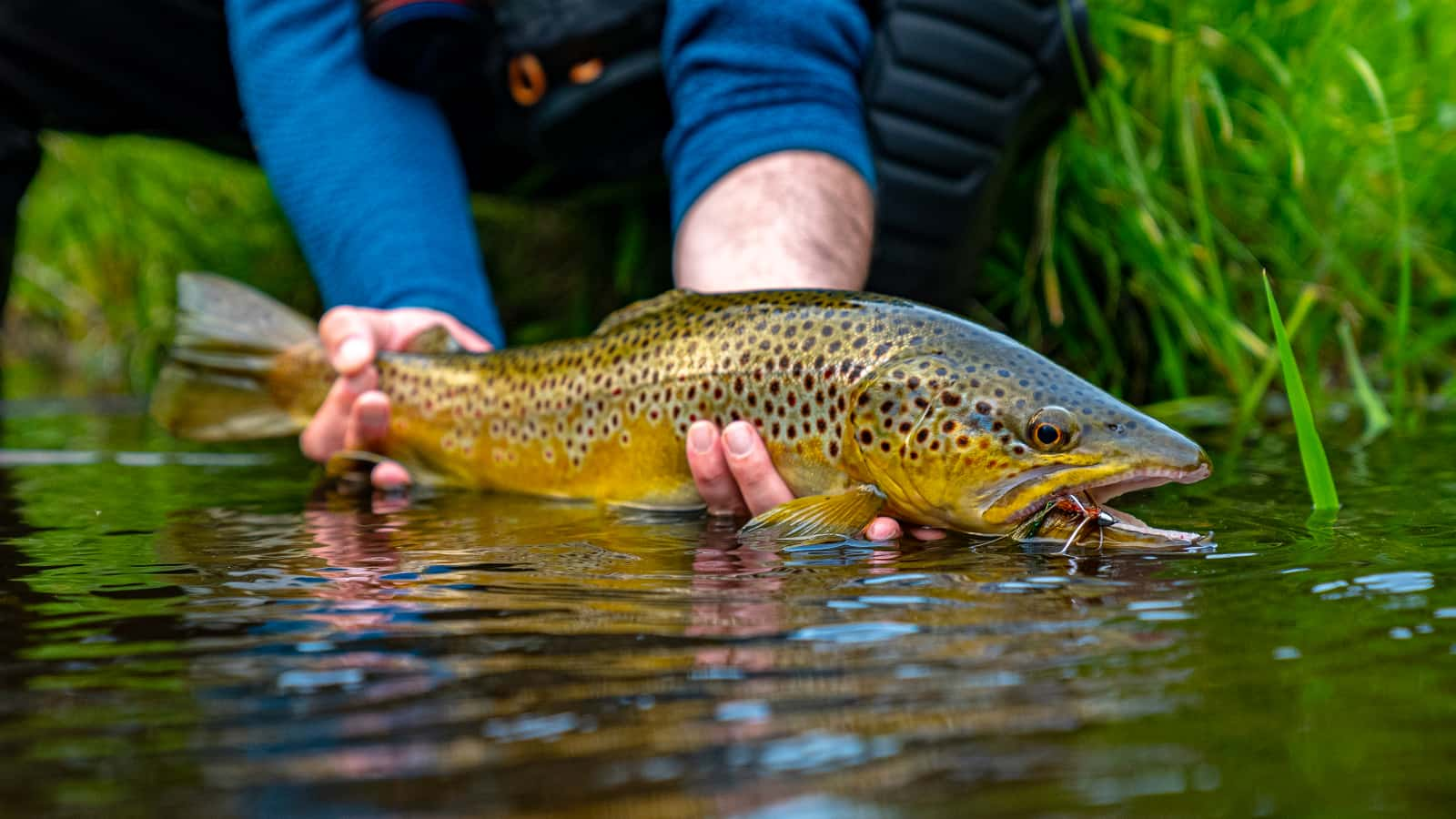Carry a Big Stick: How to Pick the Right Streamer Rod

Image by Dan Favato
Getting serious about streamer fishing changes you. You stop caring about what’s happening on the surface of the water and barely even look at those little freestone streams and roadside creeks you used to enjoy. Instead, you spend more time on the big water, staring at log jams, deep holes, and boulder gardens and wiping drool from your chin. You stop trying to catch as many fish as you can as quickly as you can. You grow more patient and calculating with your fishing and cruise along rivers cautiously, like an African big game hunter waiting for a lion to explode from the brush.
A serious streamer fishing sacrifices quantity for quality, searching for the big one all day long and willing to come home skunked. It also means you’ll start regularly catching the large predatory trout most dry fly anglers only dream about. However, before you start hunting big water for big fish with a fly rod like some sort of mutant melding of Norman Maclean and Captain Quint from Jaws, you’ve got to have the right rod for the job.
Weight Issues
Your standard 9-foot 5-weight rod probably will not work. The only exception is if you’re fishing exclusively with smaller, more traditional streamers like Muddler Minnows and Wooly Buggers on smaller water. If you’re hunting big water with big flies though, you want a rod with more backbone.
Many anglers like slightly stiffer 6-weight rods which give you a bit more power for throwing bigger flies. However, a standard 6-weight rod is still limiting in high winds, heavy currents, or when you’re casting all day long. In those situations, chucking a sinking line and a heavy streamer with a 6-weight is going to wear you out because you’re putting in much more effort to cast.
I’m a believer in bigger being better in streamer fishing because there’s nothing wrong with having extra firepower. With more backbone in your rod, you can cast with less effort and even have some left-over power in reserve when you need it. As such, you’ll be better off fishing streamers with a heavier 7-weight or even an 8-weight rod. This may reduce some sensation during the fight with a big trout, but the extra casting power created by these heavier rods will provide all the energy you need for chucking big streamers in rough conditions.
Flexibility and Length
Rod flex and length are also important factors when choosing a streamer rod. A heavyweight fly rod that’s too stiff can feel like trying to cast with a two-by-four, and rods that are too short or too long can limit your streamer chucking capabilities. Selecting a flex and length can be tricky as different rod brands have a lot different flex and length options. Try to narrow everything down a bit by selecting a rod that will cover the bulk of the water you’ll be fishing.
Tip-flex rods are the gold standard for many streamer anglers. Their flexibility is towards the top third of the rod, giving you enough kinetic energy to throw a 6-inch streamer like a spear from an atlatl. It’s a great flex for making long casts and covering a lot of water, but not for more refined work. If you’re fishing in smaller rivers where you’re hitting a lot of gaps in tight cover, a mid-flex rod may work better for you. Mid-flex rods have a more full-length casting flex, which is perfect for making shorter, more accurate casts and for flipping and pitching streamers under docks, overhanging bushes, and other tight cover.
Rod length is also a consideration. While a standard 9-foot streamer rod can serve you well, many anglers believe that longer, 10-foot-plus rods are the better bet for streamer fishing because longer levers enable longer casts. Longer rods also give you more mending control, making it a great rod for tightline presentations and dead drifting streamers. However, there are some disadvantages to choosing the longer route.
First and foremost is that longer rods are more cumbersome. If you’re streamer fishing on big rivers and/or from a drift boat where you have all the room in the world, a longer rod won’t matter. But if you’re fishing on smaller, more brushy waterways or walking through thick cover, a longer rod is more likely to hang on branches and bushes.
Another longer rod disadvantage is that they’re less accurate. With the tip of the rod farther from your hand, it’s more difficult to control where your line is going. This makes casting streamers into tight cover or even sight fishing more difficult as it’s harder to drop your fly into the bullseye.
Longer fly rods also augment your rod movements. All the little twitches and jerks are amplified. This can be a good thing if you’re trying to draw a big trout’s attention but can also scare the hell out of fish when they’re finicky.
Loading for Bear
Dedicated streamer anglers are trophy hunters—anglers who can watch a thousand small trout rising in the shallows, turn away from them, and continue casting big bugs into the deep water. It’s the type of fishing that demands hours and even days at a time of casting a heavy rod that you’ll sometimes question even purchasing.
But the juice is always worth the squeeze in streamer fishing. When it finally comes together and the monster trout of your dreams shoots out from the depths to explode on your fly, you’ll be thankful that you have the right tool for the job.











